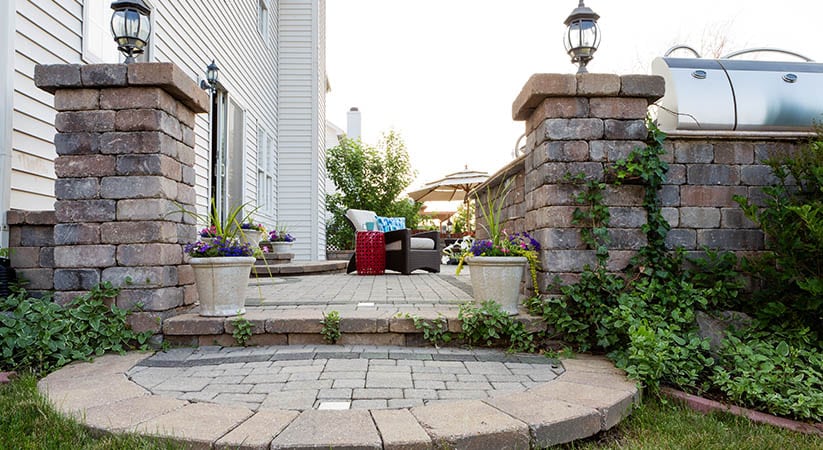When it comes to making brick patio patterns, you can try out different designs. For some, it might be as simple as cutting of bricks and simply laying them down on the ground whereas some would like patio contractors to show their expertise. With that being said, a brick patio pattern is strictly for looks because regardless of the design you choose, the functionality of the bricks will be same. Follow us to learn how you can make a beautiful DIY brick patio pattern.
Step 1: Mark The Edges Of The Patio
To begin the process of making a brick patio pattern, you will need stakes and mason’s lines to create a layout of the patio. The dimensions should be based on the brick paver size and the lines should be the outer edges of the brick instead of the edging. Although you can draw lines using only four stakes, it is suggested that you use two stakes at each corner while placing them around 2 feet beyond the patio sides.
Then, as you tie the lines you have created using the stakes, the point where the lines cross is the actual patio corner. Now you have got the actual dimensions of the patio area, allowing you to work without having the stakes come in your way again.
Step 2: Slope The Strings
Now, place a line level on each layout string and adjust the string up or down until it is perfectly in line or level. This is where you need to be a bit careful. Let’s assume that your patio is 10 feet long. You will need to lower the strings of the patio’s downhill end to around 21/2 inches from one end to another. This downhill end is where you would want the water to escape from the patio.
Typically, this area should be the farthest from the house so that if in case the water is not able to escape, it does not harm the foundation of the house.
Step 3: Excavate The Area
Now you need to excavate the patio area to about 8 inches in depth. Proceed on excavating to around 6 inches on all sides beyond the brick layout. Begin sloping the soil and ensuring that it measures the lines and maintains an 8-inch depth.
Then along the two sides, excavate to full depth and then dig the center using a straight 2×4 board to ensure the area is level and flat from side to side.
Step 4: Add A Gravel Base
Pour some compactible gravel inside the excavated area to about 4-inches. Rake the gravel so that it becomes smooth and level while following the string layout. Then, tamp it to make it compacted thoroughly.
Step 5: Install Paver Ending
It is now time to install the paver ending, which should be done according to the manufacturer’s directions. Since you are creating a brick patio pattern, standard plastic edging will work once the bricks are in place. It is usually installed with metal spikes but before that, you need to ensure that the bricks line up along the edges. This is done to ensure that the edging placement is accurate.
Step 6: Add The Sand Layer
Now lay landscape fabric over the gravel, which is designed to suppress the weed and helps separate the gravel from the sand layer. Then, pour 2-inches of sand over the landscape fabric. Use the 2×4 board to level and smoothen the sand. You should make sure that there are at least 2-inches between the sand’s top and patio edging’s top. Remove the stakes and layout strings.
Step 7: Lay The First Row Of Bricks
Begin to lay down the first row of bricks, starting from the edges and completing a row. During the process, alternate the bricks so that two are horizontal and two are vertical. Make sure to press the bricks into the same gently and install them as close as possible. Using a rubber mallet, tap the bricks to settle them in the sand.
Step 8: Lay The Remaining Bricks
Now install the remaining bricks but be sure to use the mason’s line for each row, one at a time. Since you will be working on the bricks, you need to be comfortable. Therefore, lay a plywood sheet atop the bricks to kneel. The last row left should fit snugly.
Step 9: Lock The Bricks & Backfill The Edging
Spread sand over the bricks and use a broom to ensure that the sand gets between the cracks. Sweep in multiple directions to ensure that the sand reaches all cracks. Then, gently spray a bit of water on the patio to ensure that the sand settles down in the cracks for good.
You will need to repeat the process until the cracks are completely filled. Finally, backfill the edging with sod, soil, or any other landscaping material.
Final Word
Creating a DIY brick patio pattern is not that complicated. Simply follow the steps mentioned above to make the most of your time and efforts. If the process feels a bit tricky, you can consult a backyard patio builder Long Island or ask a friend to give you a helping hand.




